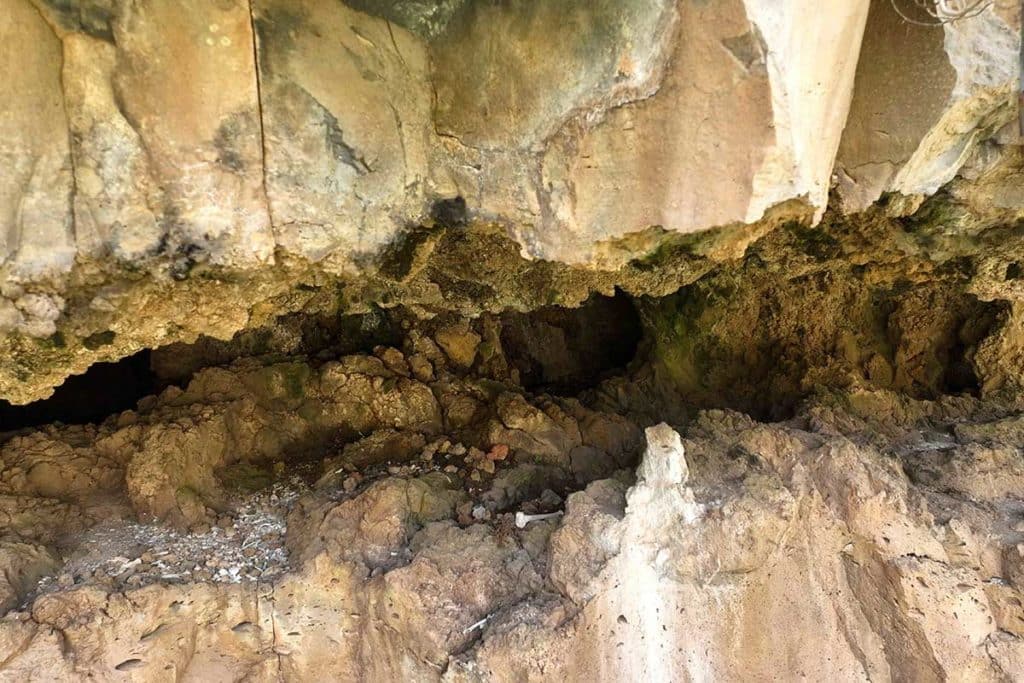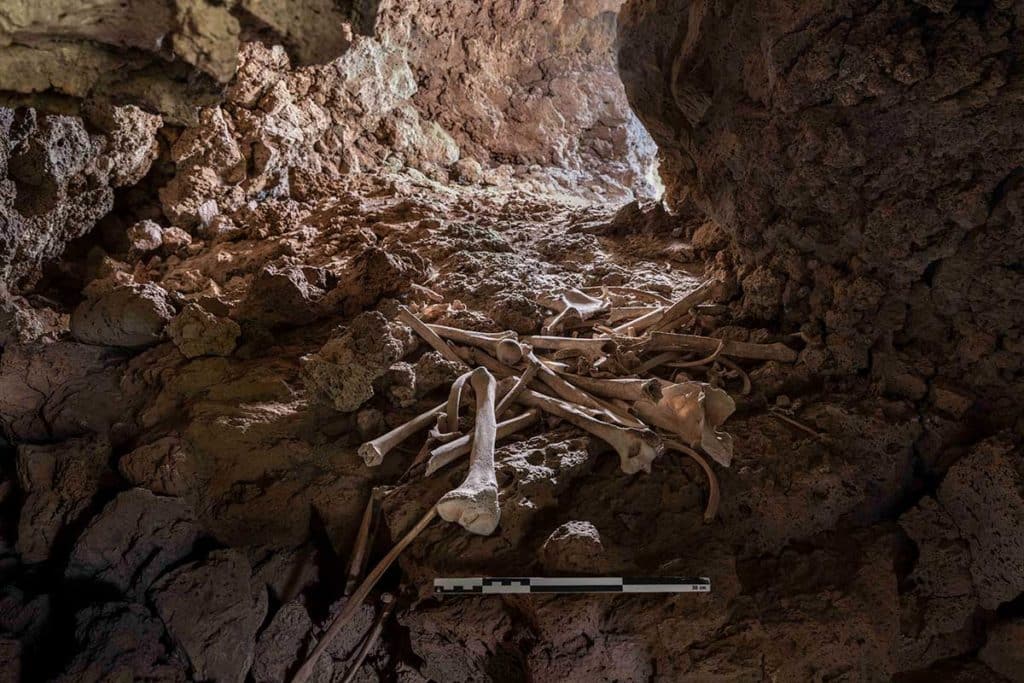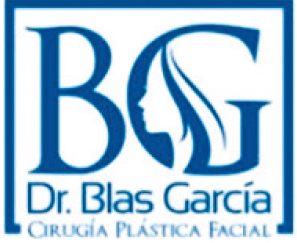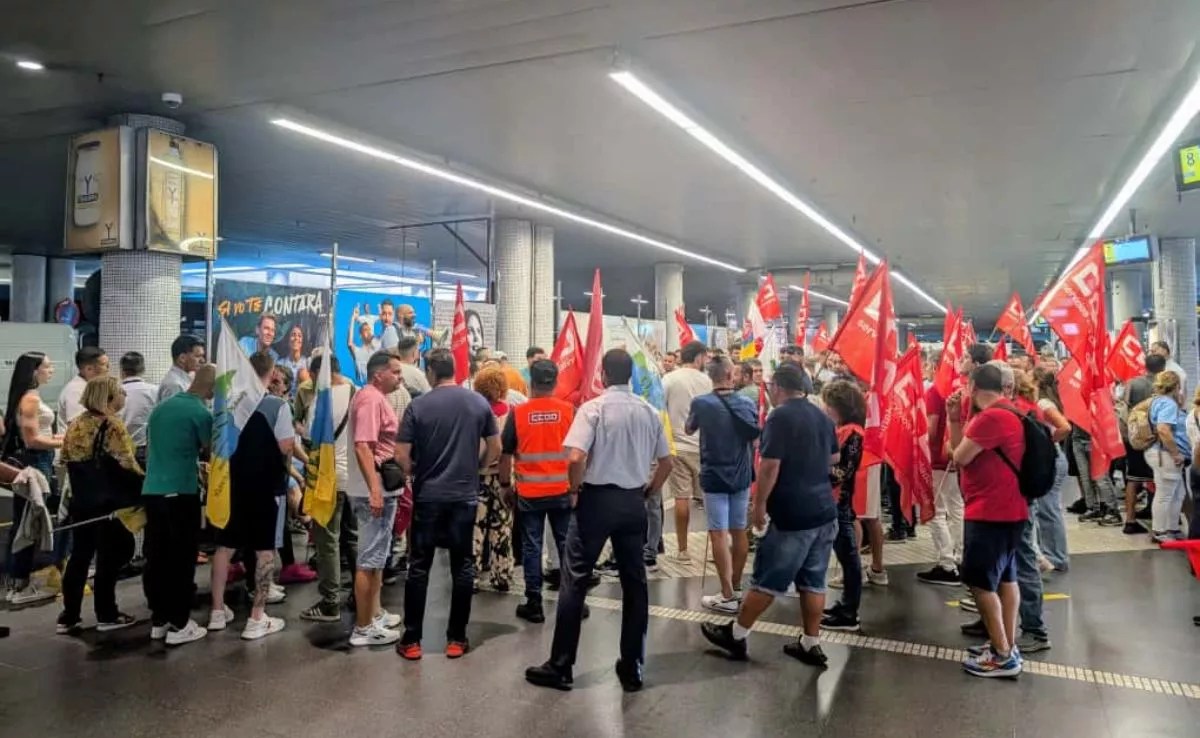He Water of God ravine, BIC since 2006 and which runs between the municipalities of La Laguna and Tegueste, is known as one of the most studied and important aboriginal habitation and burial sites in Tenerife, but to this day it continues to reveal new discoveries. The archaeological prospecting work carried out in the area in the last six months, promoted by the Tegueste City Council, has brought to light a dozen new sites, almost all of them of a funerary nature, with an important bone record inside, which the The Consistory presented this past week in the framework of an informative conference.
This is explained by the archaeologist Javier Soler, co-director of this project and of the Cultania company, to which the City Council, from the Department of Local Development directed by Manuel Martín, commissioned these works at the end of 2022 with the aim of contributing to the recovery of the archaeological resources of the municipalitysomething that, at the same time, will result in the socioeconomic development of Tegueste, highlights the mayor.
Some works directed not only to inventory new existing sites, but also to evaluate the state of conservation of those already registered and verify the archaeological potential that these sectors present to undertake future studies.
Specifically, in these six months the work has been concentrated in the Murgaño sector and, above all, in the El Pozo, or also known as La Bloquera, one of the steepest and most difficult to access areas of the ravine and which, to date, had not been recognized due to the enormous constraints they present. To carry out the technical work with the greatest safety and efficiency possible, from Cultania they developed a specific methodology that has combined the use of drones, climbing techniques and the archaeological work itself to study those natural caves that are inaccessible, explains the archaeologist, which has been a “complicated” job, he points out.
However, the use of this strategy, he points out, has offered “very promising results, to the extent that caves have been visited with a much lower level of alteration than that found for the rest of the archaeological sites in the area.”
“What we have found in many of these caves has been a fairly high amount of human remains: long bones, jaws, pieces of skulls, teeth…, all types of bones linked to human remains. And accompanied by ceramic remains, obsidian, basalt, shells, but what has stood out in the caves that we have located is that we have found more human remains than in other nearby caves with greater ease of access”, explains Soler.
“We have not touched these materials -he continues-, but we have registered and photographed them and now we will finish the report for the General Directorate of Cultural Heritage of the Government of the Canary Islands, for the Cabildo and the City Council, which has been the promoter of these works . Prospecting consists of identifying and recording archaeological sites, not collecting material, we know that these caves are not going to be looted any more than they already were because they are practically inaccessible”, so ” the state of conservation will remain the same”, he points out.
Now, the continuity or not of the following surveys in the ravine will depend on the decisions of the new local government that is formed for the next term. “We have only surveyed very specific areas of the ravine, there is still much more. In other words, what this work has shown us is that the methodology we have developed is perfectly suitable for us to continue prospecting in the ravine”, explains Soler. In fact, he calculates that “we still have 25% of deposits to locate; for studying, much more ”, and he emphasizes that the identification process“ never ends ”.
He also considers that it is necessary to “carry out more excavations” in the ravine, since, to date, there is only the one that the ULL has done, continuing the work in Cusco; as well as studying “the materials that are stored in the museum.”
It should be remembered that the intention is for this ravine to become the first archaeological park on the Island, specifically in the El Murgaño and El Pozo sector, a declaration that is the responsibility of the Government of the Canary Islands and in which the City Council has been working for years. years. However, in 2019, during the administrative process, an error was detected in the delimitation of the BIC, between what is included in the cartography and what is included in the descriptive text of the area, and that had to be corrected before being able to continue with everything. the procedure, which has delayed the process considerably.
Thus, to this day, we are still waiting for the Government of the Canary Islands to publish the new delimitation of the BIC in the BOC. “The Cabildo sent it to the General Directorate of Cultural Heritage and now it is in their hands”, and until that is published in the BOC, the rest of the process cannot be continued, explains Javier Soler, such as the subsequent master plan that the Cabildo has to elaborate, since the ravine occupies two municipalities. “The City Council has already done everything it could do within its direct powers,” he points out.
Likewise, the archaeological park will be linked to the Los Cabezazos Archeology Interpretation Center, to which visitors will go “and from there the accompanied visits to the park will leave,” says Soler. A center that will be located in an old building from the beginning of the 19th century that is located in San Marcos square, and whose rehabilitation works began in October of last year, with a budget of 244,815 euros, financed by the Cabildo, and will end in a couple of months, says the Councilor for Local Development, after which the museum project will be tendered for its endowment and opening to the public.
The combination of the center and the park will allow all citizens to enjoy visiting an archaeological zone that, in its Teguester section, concentrates almost a hundred archaeological sites, mainly made up of habitat and burial caves.



















